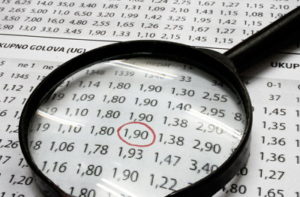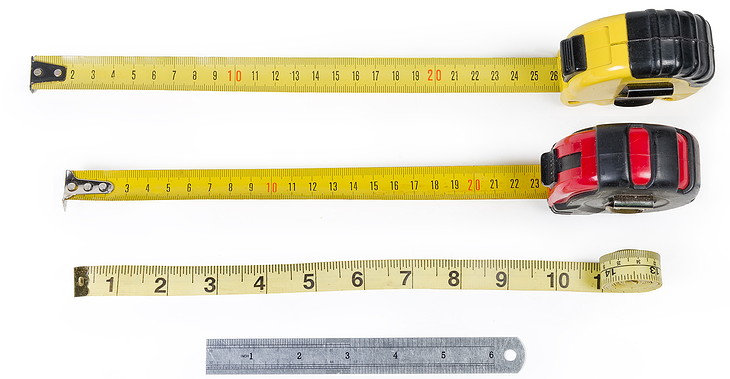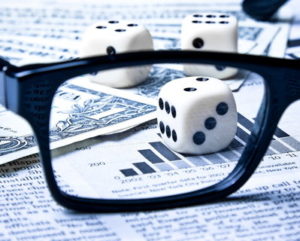 For most British punters, odds are best understood as being fractional. It’s simple to work out that if something is 5/1 then for every £1 you bet you’ll get £5 back. Yet as more and more foreign bookmakers are entering the UK market they’re also offering decimal odds more readily than fractional ones, confusing people that have never dealt with them before.
For most British punters, odds are best understood as being fractional. It’s simple to work out that if something is 5/1 then for every £1 you bet you’ll get £5 back. Yet as more and more foreign bookmakers are entering the UK market they’re also offering decimal odds more readily than fractional ones, confusing people that have never dealt with them before.
In actuality, decimal odds are just as easy to understand as their fractional cousins. The decimal format is used across Europe, with only British bookmakers steering away from them. The key thing to remember is that the unit stake of 1 is always included, so decimal odds of 1.97 mean that you’ll get 97p back on top of your £1 stake.
Decimal Odds

The decimal way of displaying odds is the favoured manner of doing so across continental Europe as well as in countries such as Australia, New Zealand, Singapore and Canada. Defectively any country that uses metric measurement will generally use decimal odds.
Learning how they work is also useful for you’re looking at a betting exchange, therefore, but also if you want to place bets when you’re abroad and don’t want to have to convert things into fractional odds.
Simply put, decimal odds give you the payout amount that includes the stake. As a result, the decimal odds of an event are the same as fractional odds converted to decimal and adding 1. Even odds, therefore, come out as 2.00 in decimal. If you opted for something like 4/1 then it would be displayed as 5.00, whereas 1/4 would be 1.25.
Whilst chucking formula into the conversation is unlikely to make things easier, here’s how to think of decimal odds:
Return = Initial Wager x Decimal Value
In other words, returns on a £100 bet on Liverpool to beat Manchester United at decimal odds of 2.00 would be £100 x 2.00, or £200. To phrase it differently, simply multiply your stake by the odds and you’ll get your return. So a £100 bet on a wager with odds of 1.25 would return £125. That’s why they’re favoured on the exchange, because they’re so easy to calculate.
Working Out The Odds
 Odds are another way of discussing the implied chances of something happening. Let’s say that darts player A is going up against darts player B and the bookmakers have decided that A has an 80% chance of winning. This obviously means that B has a 20% chance of winning, meaning that our fair bookie needs to price it up 80% / 20%.
Odds are another way of discussing the implied chances of something happening. Let’s say that darts player A is going up against darts player B and the bookmakers have decided that A has an 80% chance of winning. This obviously means that B has a 20% chance of winning, meaning that our fair bookie needs to price it up 80% / 20%.
In order to come up with the decimal odds our bookmaker takes the total chance of all outcomes happening, or 100, then divides it by the 80% chance they think player A has got. 100/80 is 1.25, so they’re player A’s decimal odds. For player B, meanwhile, we divide 100 by 20%, or 100/20. That equals 5.00, so they’re that player’s odds.
In order to figure out the probability given to an event, you simply need to reverse engineer that line of thinking. If something has been given odds of 6.00 then the math is 100/6, which works out at 16.6%. The reason 2.00 is the equivalent of Evens is that 100/2.00 equals 50%. Odds of 1.5 in decimal means the probability of that happening is 100/1.5, or 66.6%.
Decimal v Fractional Odds
| Decimal Odds | Fractional Odds |
|---|---|
| 1.20 | 1/5 |
| 1.25 | 1/4 |
| 1.33 | 1/3 |
| 1.50 | 1/2 |
| 2.00 | 1/1 (Evens) |
| 2.25 | 5/4 |
| 3.00 | 2/1 |
| 3.50 | 5/2 |
| 4.00 | 3/1 |
| 5.00 | 4/1 |
| 6.50 | 11/2 |
The trouble with decimal odds is that they seem more complex than they actually are for people that have grown up using fractional odds in betting. In reality, of course, it’s much easier to figure out your total return using decimal odds as opposed to fractional, because with fractional odds you need to add your stake in afterwards.
To put it another way, fractional odds are good at working out your net profit, whereas decimal odds are best for figuring out your total return for your bet. In decimal odds, Evens is 2.00. That means anything above 2.00 is you getting a larger return than just your stake and anything less than 2.00 is the equivalent of getting your money back plus less then what you bet.
If you’re using a bookmaker that is offering fractional odds and you want to figure out what that would be in decimal then you simply divide the first number by the second and then add 1. So odds of 1/4 is 1 divided by 4, or 0.25, plus 1 for 1.25. Equally you might find yourself in a position where the odds are decimal but you want to know what they’d be in fractions.
When that is the case, the easiest way to do it is to take 1 away from the decimal and then convert what’s left into the most simplified fraction possible. So odds of 6.00 would be 6.00-1, which is 5 and becomes 5/1. To use a more complex example, 8.50 as decimal odds would be 8.50-1, which is 7.50. The most simplified fraction would be 15/2.
The table at the top show a list of the most obvious odds as both decimal and their fractional equivalents.
Having read the above, you might be able to see the table making a bit more sense. A £1 bet at 5/2, for example, would return £2.50 plus your initial £1 stake. That amounts to £3.50, which is why the decimal odds equivalent of 5/2 is 3.50. Equally, a £1 stake on something with fractional odds of 1/3 would mean that you’d get 33 pence back plus your £1 stake, of £1.33. The fractional odds are 1.33.
The key thing with this is not to overly test yourself. Most bookmakers will give you the choice about whether you’d like to see your odds displayed as fractional or decimal, so figure out which one is for you and then go from there. You don’t need to sit and do maths problems to work out what you’re betting, but it’s handy to know how it all works.
If you are interested in American Odds and how they work see our dedicated article.
